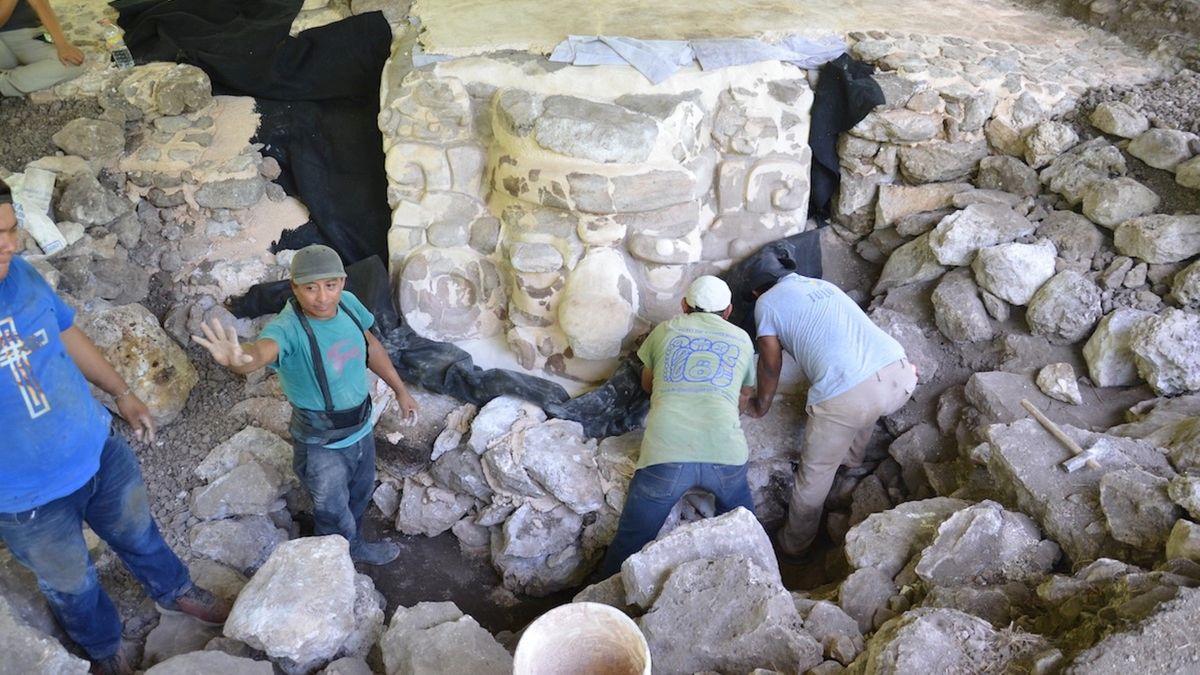A giant Mayan mask as long as a person has been unveiled at an archeological site in the Mexican state of Yucatán.
The mask, which depicts the face of an unknown deity or elite person, was formed from the building material plasterwork and dates from a period in Maya history known as the Late pre-classical (about 300 BC – 250 AD), according to the newspaper Yucatan News.
The discovery was made in 2017 at the archaeological site of Ucanha, near the present-day city of Motul, and since then, researchers from Mexico’s National Institute of Anthropology and History (INAH) have been working hard to restore it.
Stucco masks like these “represent the faces of individuals with specific characteristics that may be associated with gods or with characters of prominent social status,” INAH said in a statement.
Related: On Photos: Hidden Mayan Civilization
The mask is a plasterwork, a kind of brightly colored painted sculpture carved from a background of plasterwork. According to the statement, the Maya usually placed these masks around stairs with pyramidal bases. Archaeologists have found similar reliefs in Acanceh and Izamal, but this is the first in Ucanha. The discovery is part of ongoing research on Mayan hills found at the site.
The mask was temporarily reburied after it was discovered, so that the structure was protected until it could be properly studied and preserved. Samples taken from the structure showed deterioration and it was excavated again in 2018 so that archaeologists could repair it.
During the restoration and preservation process, archaeologists reinforced fragile parts of the mask. They also moved sections that were relocated over time to their original positions. They also cleaned the surfaces to highlight the mask’s patterns and colors.
The archaeologists completed the work in 2019 before burying the mask one last time. INAH said the purpose of these efforts is to preserve the mask on the site, which has no legal protection, in the long run.
Originally published on Live Science.
